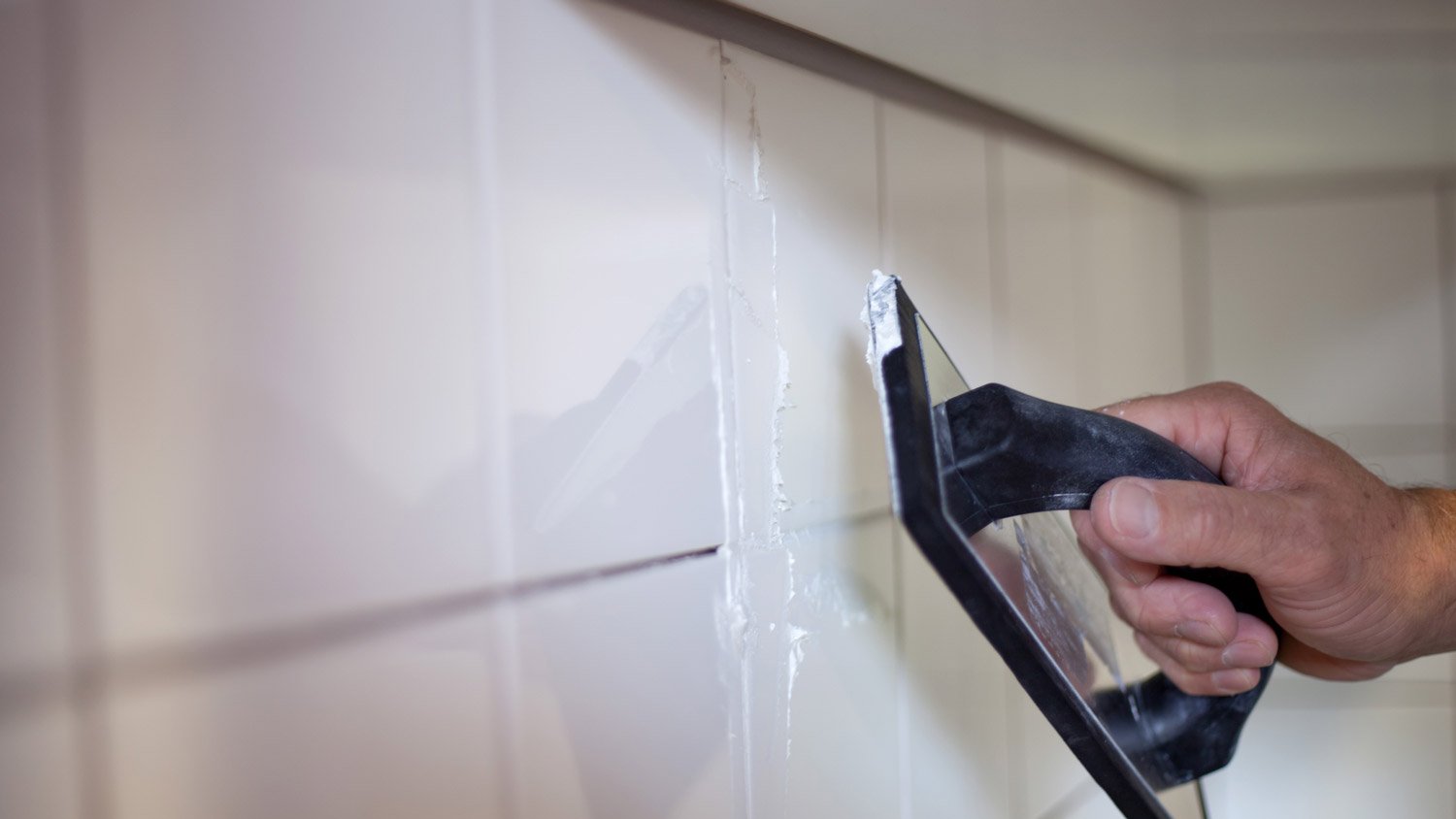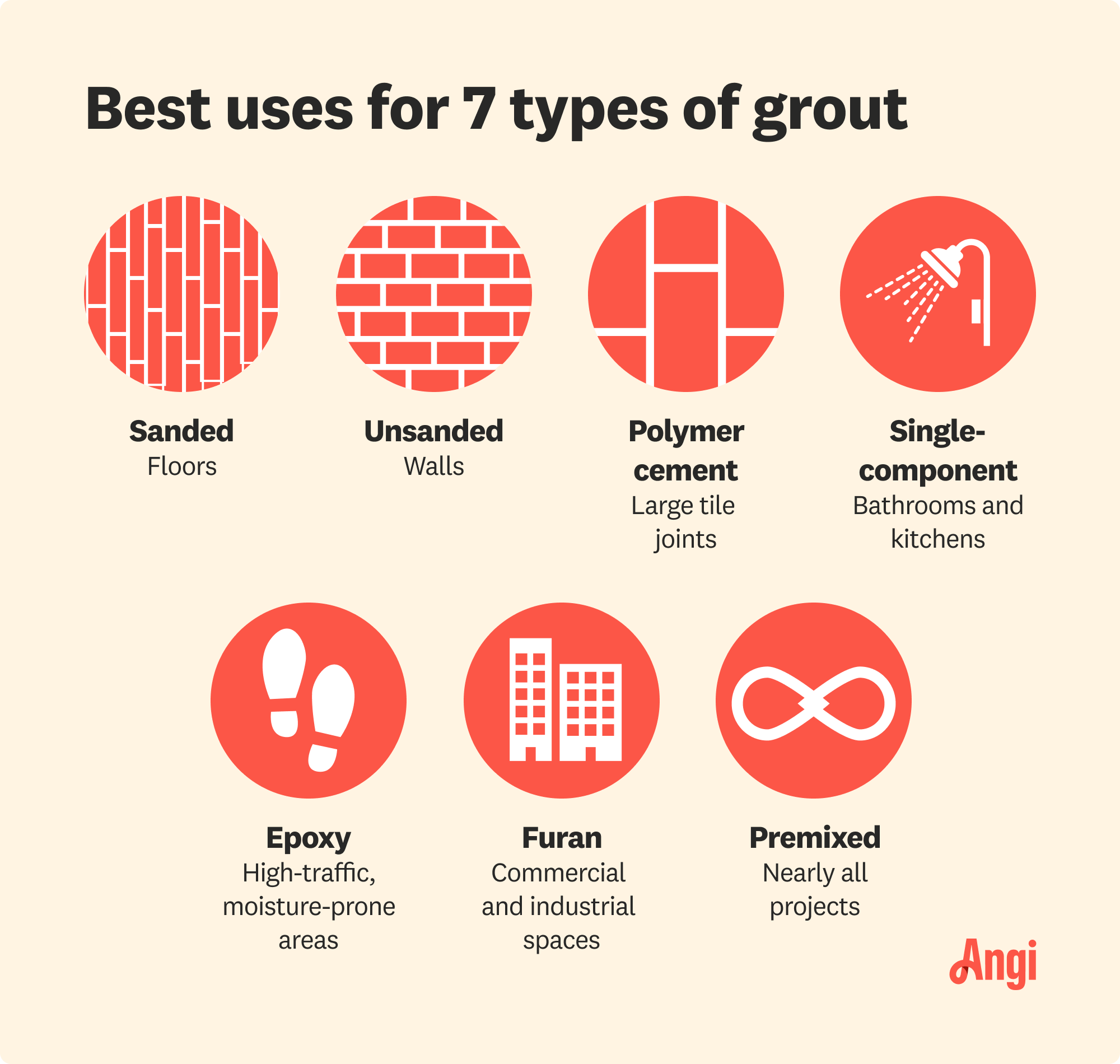Best Grout for Kitchen Backsplashes: 5 Types to Consider
We fill you in on the best grout options for your kitchen backsplash


While tile often takes center stage, the impact of the best grout for kitchen backsplashes should never go unchecked. After all, when it doesn’t turn out as expected, it can stick out like a sore thumb. So, with all of the numerous grout options available, which is the best grout for your kitchen backsplash project? The answer depends on your priorities, personal preferences, and your kitchen backsplash design. Let’s review the different types of grout available for kitchen backsplashes.
1. Epoxy Grout
Epoxy grout is a highly durable and stain-resistant option for a kitchen tile backsplash. It consists of epoxy resins and a hardener, making it resistant to moisture, cleaning chemicals, and mold or mildew growth. It’s also available in various colors and doesn’t require additional sealing once installed.
With its extreme durability, epoxy grout is ideal for kitchens with lots of heavy use, and it’s particularly suitable for a tile backsplash behind a stove. It also dries fast and has a short working time, making it difficult for a DIY install. Any error in installation can make removal particularly difficult. Consider hiring a local backsplash installer to ensure smooth, flawless results.
| Pros | Cons |
|---|---|
| Extremely durable | Removal is difficult |
| Resistant to moisture | Discolors over time |
| Many color options | Not as precise as other materials |
Best for: Behind stoves and other high-traffic kitchen areas, as well as bathrooms.
2. Acrylic Grout

Pre-mixed acrylic grout is a DIY-friendly option that combines acrylic resins with cement-based grout. It’s easy to work with, doesn’t require sealing, and is resistant to staining and cracking. There are specific additives in acrylic grout that make it very flexible, which is excellent when working with areas that might require a more forgiving material.
Acrylic grout is also available in a wide variety of hues to match your tile and kitchen cabinet colors, plus it offers excellent color payoff, too.
While acrylic grout is suitable for most backsplashes, it may not be as durable as epoxy or cement-based grouts. It can also be pricier than other grout options, which can drive up your backsplash installation cost, which runs between $15 to $40 per square foot.
| Pros | Cons |
|---|---|
| Flexible | Not super durable |
| Doesn’t require sealing | Can be expensive |
| Easy to work with | Discolors over time |
| Many color options | Requires mixing |
Best for: Sensitive areas that aren’t high-traffic and require grouting finesse.
3. Unsanded Cement Grout
Unsanded grout is similar to sanded grout, but lacks sand as an aggregate material. Because of this, it can flow easily into narrow grout lines, making it an excellent choice for smaller-format tiles. Its smoothness and workability are also ideal for delicate tile surfaces such as natural stone, metal, glass, and ceramic. Additionally, it doesn’t require additional sealing after installation.
On the flip side, the absence of aggregate (sand) in unsanded grout makes it prone to discoloration, shrinkage, and cracking as water evaporates. Unless you’re working with a stainless steel or other metal tile, it’s not typically the best choice for a kitchen backsplash.
| Pros | Cons |
|---|---|
| Easily fills narrow space | Discolors easily |
| Doesn’t require sealing | Cracks |
| Easy to work with | Shrinks over time |
Best for: Working with smaller tiles that require precise lines in small spaces—especially metal tiles.
4. High-Performance Polymer Cement Grout
High-performance polymer cement grout is a cement grout that’s been modified with polymers, making it stronger and more resistant to damage. This grouting is highly moisture-resistant and holds up against many chemicals. This is an industrial-grade grout, and it’s seen in areas of extreme use and where safety is a concern. For most homes, it’s a bit much for backsplash.
The grout is heavy and requires mixing, but if installed correctly it results in a durable and resistant grout that’s one of the toughest to damage.
| Pros | Cons |
|---|---|
| Wildly durable | Heavy |
| Chemical resistant | Complicated |
| Difficult to work with |
Best for: Floor tiles that get a ton of heavy foot traffic.
5. Single-Component Grout
Single-component grout is exactly what it sounds like. It’s a sanded grout that requires no mixing and is less expensive than other types of grout like epoxy. It’s a simple formula and is equally simple to work with, which is why it’s a great choice for more relaxed projects and areas that may not need a specific material.
Single-component grout dries quickly and is non-porous, so it doesn’t need to be sealed and is resistant to stains and other damage. However, single-component grout isn’t as strong as other types. It will crack much easier than epoxy and doesn’t offer the same wear resistance as a high-performance polymer.
| Pros | Cons |
|---|---|
| Inexpensive | Lacks strength |
| Easy to use | Dries quickly when applied |
| Versatile | Lack of color options |
Best for: Simple applications or those that don’t require super hard materials like epoxy. It’s also a solid choice for any repair work as it blends well into existing grout.
How to Choose a Grout Type For a Backsplash
Choosing grout type depends mostly on the backsplash material you’re working with and the desired final appearance you’re going for. A lighter color grout tends to blend with lighter backsplashes, while a darker-colored grout will make the tiling look more prominent. This is doubly true if the tiles are light.
Beyond aesthetics, different materials will be better suited to certain locations. Areas with excess moisture—bathrooms, kitchens, laundry areas—are better suited to epoxies and harder grout materials. Unsanded grout fills delicate spaces, but doesn’t react well to persistent moisture.
If you’re still unable to decide which exact type to use, it’s better to discuss with a backsplash installation pro before moving forward. Removing grout is time-consuming and expensive, so it’s best to do it right the first time.

Kitchens benefit from green drywall instead of white drywall because it's more moisture- and mold-resistant. If your kitchen doesn't already have green drywall, it's worth installing it during a remodel.
















